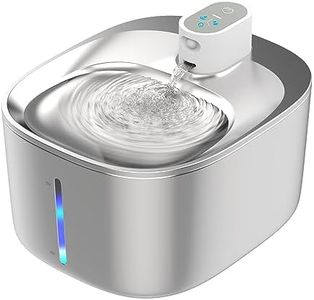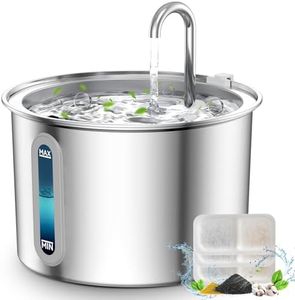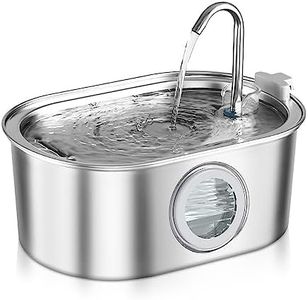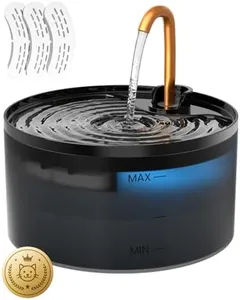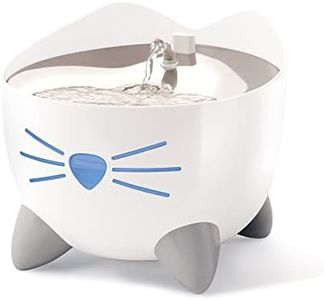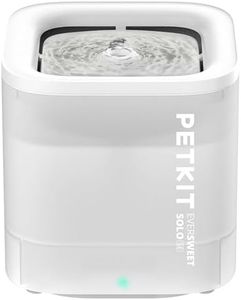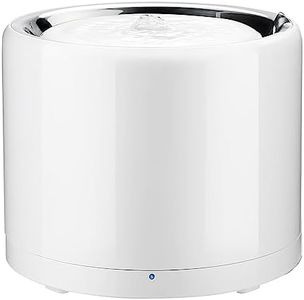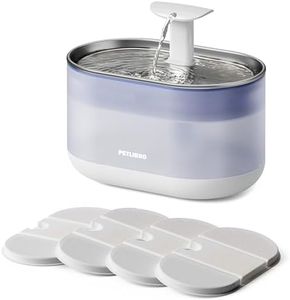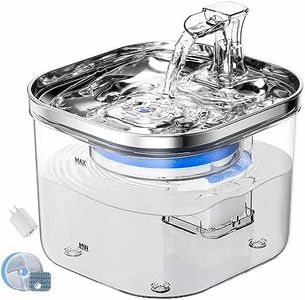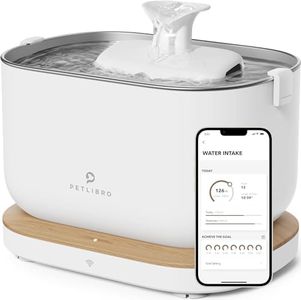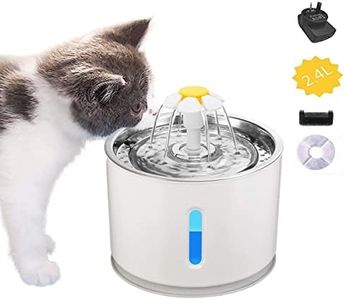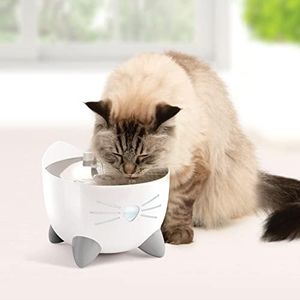We Use CookiesWe use cookies to enhance the security, performance,
functionality and for analytical and promotional activities. By continuing to browse this site you
are agreeing to our privacy policy
10 Best Cat Fountains
From leading brands and best sellers available on the web.Buying Guide for the Best Cat Fountains
Picking the right cat fountain is all about keeping your pet healthy, hydrated, and happy. Since cats can be picky drinkers, a good fountain encourages regular drinking by providing fresh, moving water, which can help with their kidney and urinary health. When shopping, think about your cat’s habits, the spot where you’ll put the fountain, and how much maintenance you’re willing to do. Focusing on a few important features will help you find the best fit for both you and your cat.Water CapacityThis is how much water the fountain can hold, and it's important because it determines how often you'll need to refill it. For one cat, a smaller capacity (around 1-2 liters) might be fine, but if you have multiple cats or travel often, larger capacities (3 liters and above) are more convenient because they last longer between fills. If your cat drinks a lot of water or if you're out of the house frequently, look for higher capacities. If space is tight or you enjoy regular maintenance, a smaller option could work.
MaterialCat fountains are usually made from plastic, stainless steel, or ceramic. Material matters for hygiene, durability, and your cat’s preferences. Plastic is lightweight and affordable, but some cats develop allergies or chin acne from it and it can scratch easily. Stainless steel is durable, resists bacteria, and is easy to clean, making it a great all-rounder for health. Ceramic is sturdy, looks stylish, and stays cool, but it’s heavier and tends to cost more. Choose the material based on your willingness to clean, your cat’s sensitivities, and what best fits your home décor.
Filtration SystemThe filtration system keeps water clean by trapping hair, dirt, and debris, and sometimes improving taste or removing chemicals. Filters can be foam, charcoal, or a combination. A basic filter is enough for homes with a clean water source and one cat, while more robust filters are better for multiple pets or if your tap water isn’t perfect. If your cat is picky or you have hard water, prioritize a fountain with a strong filtration setup. Remember you’ll need to change filters regularly, so consider how easy replacements are to find.
Noise LevelNoise level refers to how much sound the fountain makes while operating, mostly from the motor and the water flow. Quiet fountains are less likely to bother sensitive cats or disrupt your living space. Many models promote themselves as 'ultra quiet'; generally, a soft hum is normal, but loud or rattling sounds can scare cats away. If your cat is timid or you’ll use the fountain in a bedroom or quiet area, look for models renowned for low noise.
Ease of CleaningA fountain's design determines how easy it is to take apart and wash. This is important because regular cleaning prevents slime, bacteria, and buildup, keeping your cat’s water safe. Simple designs with fewer crevices are easier to maintain, while those with complex shapes might be more work. If you want low-maintenance upkeep, look for fountains labeled dishwasher-safe or with minimal, straightforward components.
Water Flow OptionsSome fountains offer adjustable water flow—like gentle streams, bubbling pools, or waterfall effects. The right flow can entice your cat to drink more, especially if they enjoy moving water. Shy or nervous cats tend to prefer quiet trickles, while playful cats might love stronger streams. Consider your cat’s personality and let their curiosity guide you toward the right flow type for their comfort.

